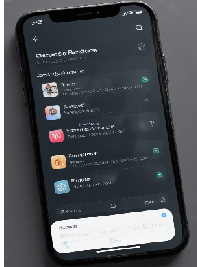Today, users effortlessly transition between web and mobile platforms, bridging the gap between web and mobile is crucial. It’s without a doubt a challenge that extends beyond merely ensuring functionality; it’s about designing an intuitive and engaging experience no matter which device is being used.

Designing a mobile app goes beyond just resizing a web interface. Mobile users interact differently than desktop users, so factors like screen size, touch gestures, and the app’s environment influence design choices. Bridging the gap between web and mobile requires a focus on simplicity and clarity.
Essential features should be readily accessible, and the interface must adapt seamlessly to various screen sizes while preserving usability. Employing responsive design is vital to ensure your app retains functionality and visual appeal across different devices.
Mobile apps excel at connecting users across web and mobile platforms, providing constant access regardless of location. While desktop websites are typically used in stable environments, mobile apps cater to dynamic, on-the-go use.
This requires a focus on speed and efficiency, with quick loading times and smooth navigation essential for engagement. Furthermore, offline mode improves usability by allowing access to critical functions without a stable internet connection.
Mobile devices offer unique capabilities that can be leveraged to create a more engaging experience. Features like GPS, accelerometers, and cameras can enhance app functionality. Integrating location-based services offers users relevant information based on their current location while incorporating camera functionality, which enables features like barcode scanning or augmented reality.
Using these mobile-specific features enhances app functionality and provides a more personalized experience.
Providing support through mobile apps involves more than just a contact form or email address. Users expect immediate assistance, so integrating in-app support features can be incredibly beneficial. Live chat options, help centers, and interactive FAQs can give users the help they need without leaving the app. Push notifications can also deliver timely updates and assistance, ensuring users are informed and engaged.
Successfully bridging the gap between web and mobile requires thoughtful design and understanding of user behavior across platforms. Optimizing your app for mobile use, engaging users on the go, using mobile-exclusive features, and providing immediate support will create a smooth, enjoyable experience that fosters user loyalty. Staying updated with technology and user preferences keeps you competitive and ensures consistent value across platforms.